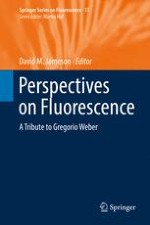2016 | OriginalPaper | Buchkapitel
Synthetic and Genetically Encoded Fluorescence Probes for Quantitative Analysis of Protein Hydrodynamics
verfasst von : Gerard Marriott
Erschienen in: Perspectives on Fluorescence
Aktivieren Sie unsere intelligente Suche, um passende Fachinhalte oder Patente zu finden.
Wählen Sie Textabschnitte aus um mit Künstlicher Intelligenz passenden Patente zu finden. powered by
Markieren Sie Textabschnitte, um KI-gestützt weitere passende Inhalte zu finden. powered by
